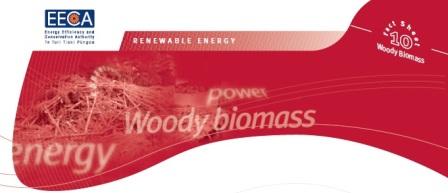EECA - Woody biomass fact sheet 10
Renewable Energy Fact Sheet 10: Woody Biomass - EECA

Biomass energy from wood (woody biomass) is a clean and renewable energy source. Because fossil fuels are likely to become increasingly expensive, woody biomass can play an important role by providing energy in the form of heat, electricity or transport fuels.
Woody biomass is a term used to describe wood, wood residue and by-products, and dedicated, fast growing trees, bushes and shrubs. Woody biomass has been used by humans as a source of energy in a relatively simple way, namely fires for heat and light, for thousands of years. While this simple use remains popular, woody biomass can also be utilised as a source of energy for larger-scale commercial and industrial applications.
Woody biomass is effectively a store of solar energy. During tree growth, energy from the sun is captured using the process of photosynthesis. The wood stores this energy in the form of cellulose, a form of carbohydrate. As a renewable energy source that can be grown and used sustainably, burning woody biomass has almost zero net greenhouse effect as the carbon dioxide given off during combustion is absorbed by the growth of the next crop of woody biomass.
Woody biomass can be used to generate heat and electricity, and can also be converted into liquid fuels similar to petrol and diesel. When used as a substitute for fossil fuels (coal, oil and gas) woody biomass reduces the amount of greenhouse gas emissions produced by New Zealand.
Using woody biomass can also be very cost effective, particularly when the wood residue being used is a by-product of an existing process. It can often be used to provide some of the energy for the production process itself.
